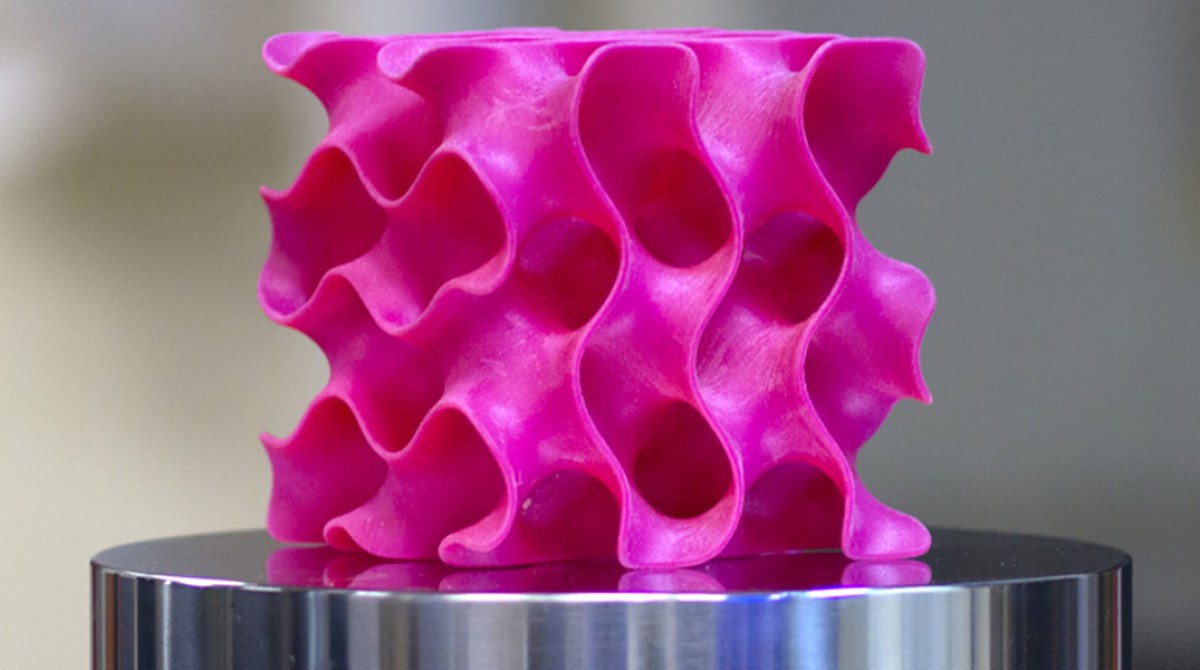Last September, we wrote about the Hasso-Plattner-Institute in Germany and their R&D on metamaterials, hacking the internal structures of materials to create simple, non-powered machines. By experimenting with various microstructural designs, researchers were able to 3D print simple machines that can deform to create some form of actuation, allowing the 3D printing of switches, latches, door handles, and the like.
Drone can dive like a seabird and sail like a flying fish
We have seen a few aerial drones capable of venturing underwater, but none that can enter and exit the marine environment quite like the so-called AquaMav. Built by engineers at Imperial College London, the drone uses collapsible wings to dive like a fish-hunting seabird and scoop up water samples from beneath the surface, and then launch like a flying fish when it’s time to return to the skies.
Continue reading… “Drone can dive like a seabird and sail like a flying fish”
Are these lab-grown diamonds better than the real thing?
Around the corner from the famous Diamond District in New York City, David Weinstein sorts through some envelopes on his cluttered desk. All of them are full of diamonds.
Continue reading… “Are these lab-grown diamonds better than the real thing?”
Researchers invent the ‘perfect’ soap molecule
A team of researchers, led by the University of Minnesota, has invented a new soap molecule made from renewable sources that could dramatically reduce the number of chemicals in cleaning products and their impact on the environment. The soap molecules also worked better than some conventional soaps in challenging conditions such as cold water and hard water.
Continue reading… “Researchers invent the ‘perfect’ soap molecule”
Roomba’s inventor creates a weeding robot for gardens
One of the most time-consuming (and necessary) parts of gardening is weeding. Thankfully, the guy who invented Roomba is on it. Meet Tertill.
Continue reading… “Roomba’s inventor creates a weeding robot for gardens”
IBM uses tiny tubes to grow the chips of the future
The reign of silicon may be coming to an end. For years, researchers and entrepreneurs hoped that carbon nanotubes would revolutionize microchip design. These tiny, molecular-level structures could, in theory, be used to make chips that are six to ten times faster than today’s silicon-based variety—and use far less electricity.
Continue reading… “IBM uses tiny tubes to grow the chips of the future”
World’s smallest drone spinning itself in the air
Researchers at the University of Pennsylvania have unveiled the world’s smallest self-powered drone, which weighs only 2.5 grams and is the size of a quarter. The tiny drone is called Piccolissimo, after the Italian word for pocket-sized. The drone comes in two versions: the quarter-sized one, and a slightly larger and heavier one that is steerable.
Continue reading… “World’s smallest drone spinning itself in the air”
Portable iPhone-powered lab developed by research team that can detect cancer with 99% accuracy
It’s no secret that Apple has ambitious plans for iPhone and Apple Watch in the health industry, but it’s not the only company looking for ways to integrate smartphones in the medical field. Recently, a research team from Washington State University, under the leadership of assistant professor Lei Li, developed a portable laboratory that’s powered by a smartphone and capable of detecting cancer nearly instantly…
Former Apple engineers created $1,500 oven that automatically recognizes different foods and cooks them
Leanna Garfield/Business Insider
If you’re an amateur cook, roasting a rack of lamb or baking fresh bread in an oven can feel daunting.
Potential Mach 2.2 Airliner Market Pegged At $260 Billion
Stretched, trijet 50-seat configuration to be tested by subscale supersonic demonstrator
Guy Norris Los Angeles
Boom Time
More than half a century after development of the Concorde was launched, progress toward economically viable supersonic airliners has proved elusive. But now a Silicon Valley-backed startup says the ingredients for a successful, small, faster-than-sound airliner are in place, thanks to a new wave of enabling technology and a market primed with the need for speed.
Since first unveiling plans earlier this year for a 40-seat, twin-engine, supersonic transport, Denver-based Boom Technology has revised and fine-tuned the design that will cruise at Mach 2.2 for the same ticket price as subsonic business class. The aircraft has since been stretched to seat up to 50 and is now reconfigured as a trijet to permit immediate use on long overwater routes.
Continue reading… “Potential Mach 2.2 Airliner Market Pegged At $260 Billion”
Brain-Controlled Bionic Legs Are Here At Last
NO, REALLY. AMPUTEES HAVE BEEN TESTING THEM FOR OVER A YEAR
For a full decade, Gudmundur Olafsson was unable to move his right ankle. That’s because it wasn’t there. Olafsson’s amputated lower leg was the delayed casualty of an accident from his childhood in Iceland, when he was hit by an oil truck. “I lived in pain for 28 years,” says Olafsson. “After 50-plus operations, I had it off.” For years after the operation he wore a Proprio Foot, a prosthetic with a motorized, battery-powered ankle, sold by the Reykjavik-based company Ossur.
Continue reading… “Brain-Controlled Bionic Legs Are Here At Last”
This is what you get when you give a 3D printer artificial intelligence
A London-based startup has combined some of today’s most disruptive technologies in a bid to change the way we’ll build the future. By retrofitting industrial robots with 3D printing guns and artificial intelligence algorithms, Ai Build has constructed machines that can see, create, and even learn from their mistakes.
Continue reading… “This is what you get when you give a 3D printer artificial intelligence”













